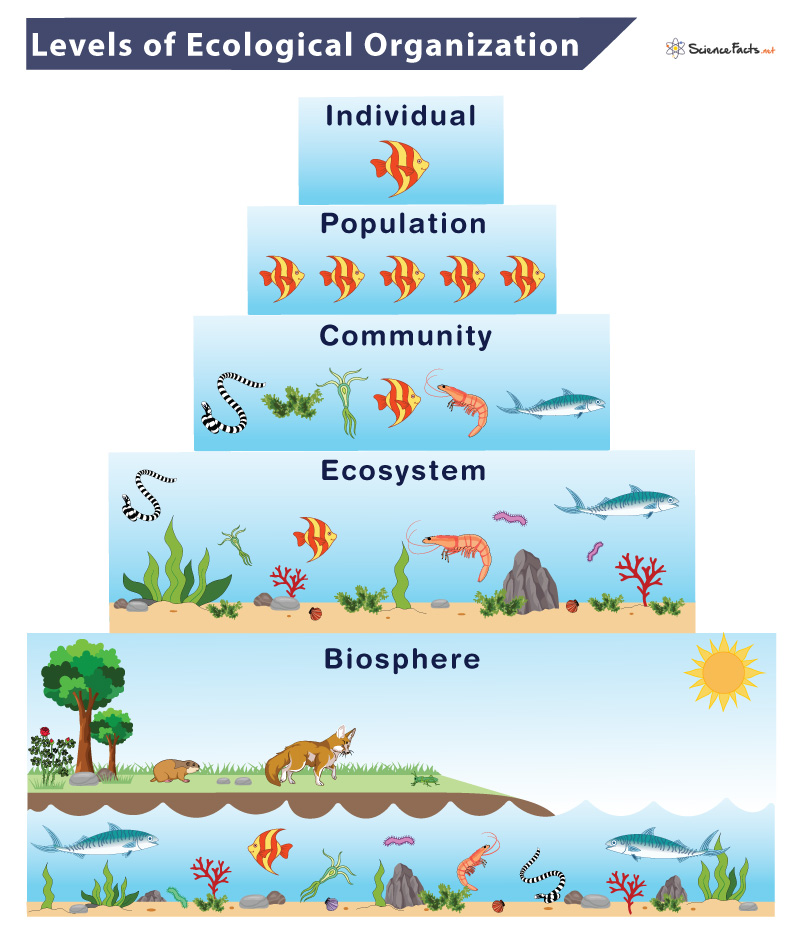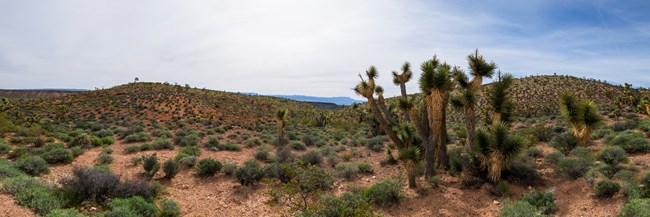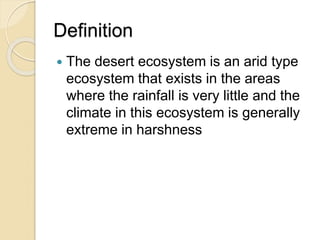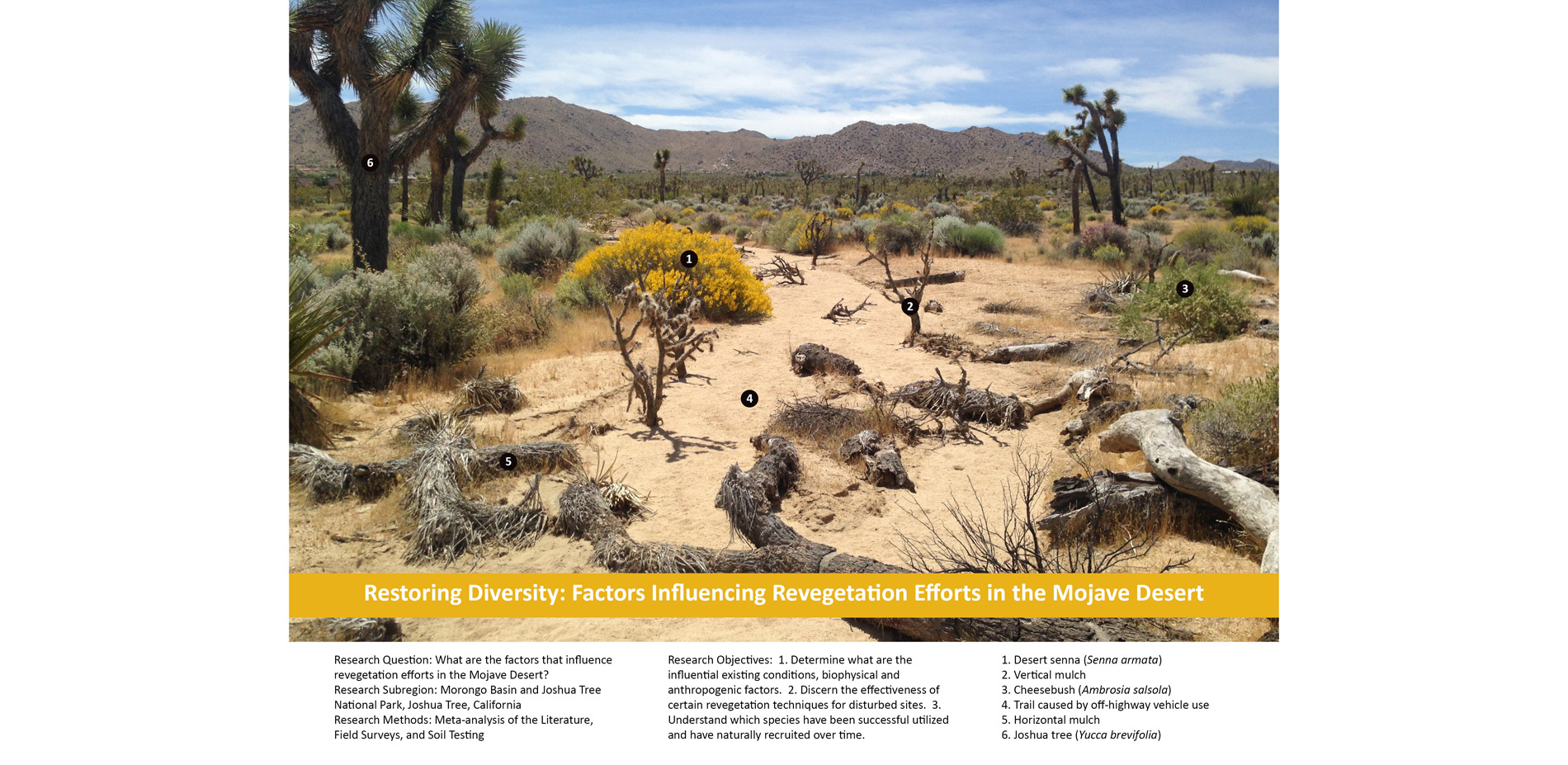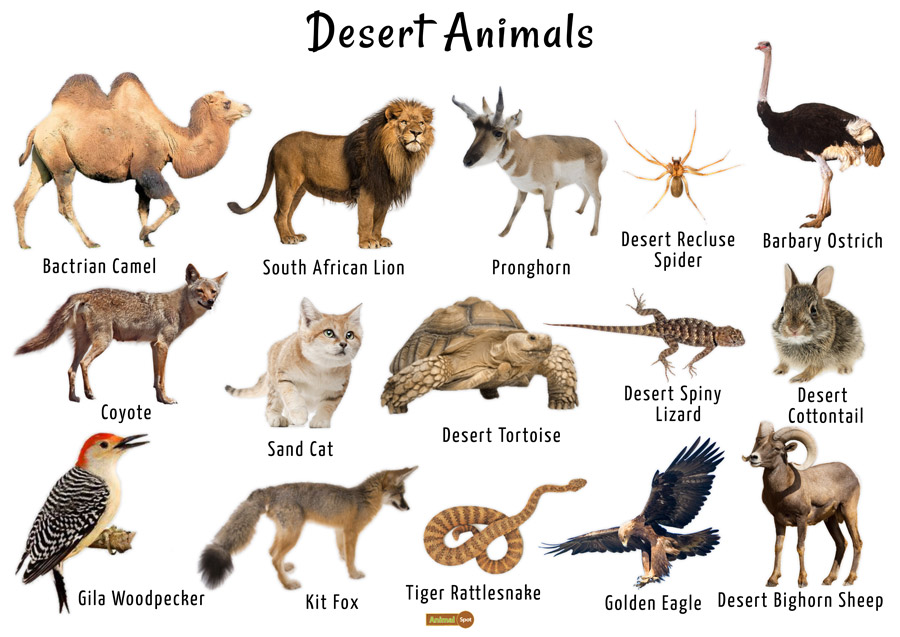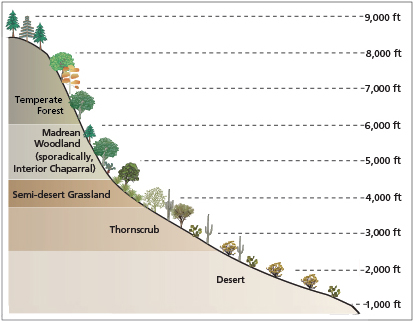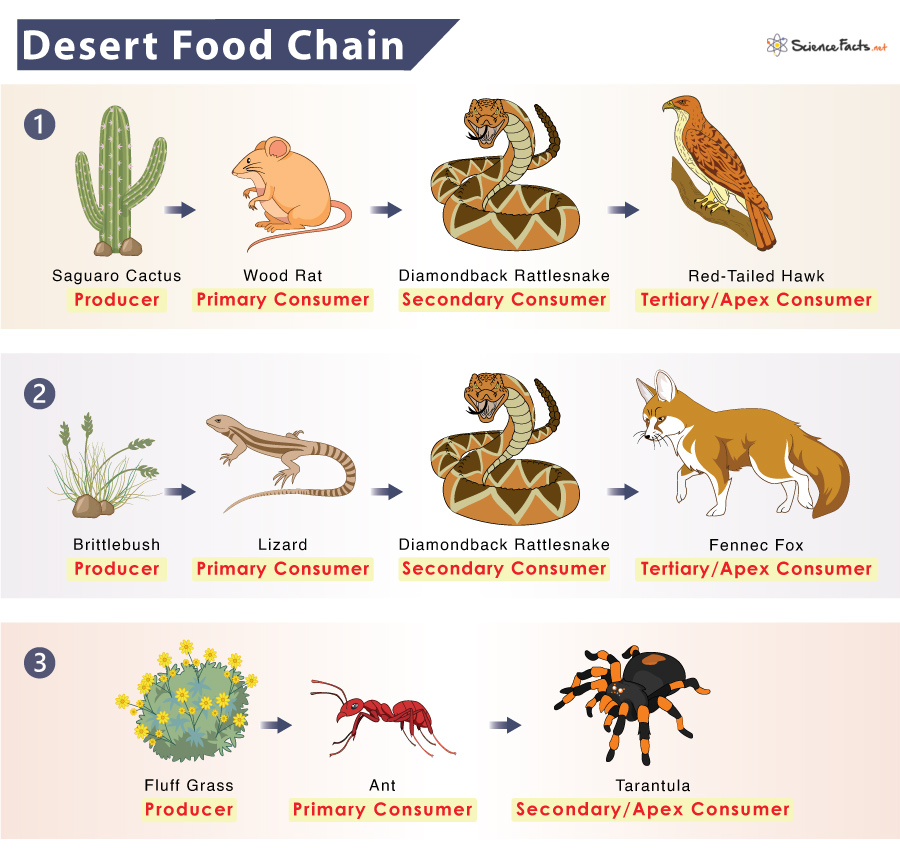Topic ecosystem of a ocean: Dive into the "Ecosystem of an Ocean," a realm where life thrives in harmony beneath the waves, revealing nature"s intricate connections.
Table of Content
- How does the ecosystem of the ocean differ from other aquatic environments?
- Overview of Marine Ecosystems
- Types of Marine Ecosystems
- Key Species and Biodiversity
- Importance of Coral Reefs
- Open Ocean and Deep-Sea Ecosystems
- Human Impacts and Conservation Efforts
- YOUTUBE: What are some ocean ecosystems? | Marine Ecosystems
- Emerging Threats and Future Challenges
- Role of Oceans in Climate Regulation and Carbon Cycle
- Economic and Cultural Significance of Ocean Ecosystems
How does the ecosystem of the ocean differ from other aquatic environments?
The ecosystem of the ocean differs from other aquatic environments in several ways:
- Size: The ocean is much larger in size compared to other aquatic environments. It covers approximately 71% of the Earth\'s surface, making it the largest ecosystem on the planet.
- Diversity: The ocean ecosystem supports a tremendous diversity of species. It is home to numerous different organisms ranging from microscopic plankton to large marine mammals.
- Salinity: The ocean has high levels of dissolved salt, giving it a distinct salinity. This high salinity affects the types of species that can survive in the ocean compared to freshwater or brackish environments.
- Depth: The ocean ecosystem is characterized by varying depths, including the open ocean, deep-sea ocean, and coastal areas. Each of these zones supports different types of organisms adapted to the specific conditions of their respective depths.
- Food Chains: The ocean ecosystem is highly dependent on complex food chains and webs. Phytoplankton serve as the primary producers, converting sunlight into energy through photosynthesis. They are then consumed by small zooplankton, which are further eaten by larger animals, and so on.
- Threats: The ocean ecosystem faces unique threats such as overfishing, pollution, habitat destruction, and climate change. These factors can have significant impacts on the delicate balance of the ocean ecosystem and the species that rely on it.
In summary, the ocean ecosystem stands apart from other aquatic environments due to its immense size, biodiversity, salinity, depth variations, complex food chains, and unique set of threats. Understanding and preserving the ocean ecosystem is essential for maintaining the health of the planet and sustaining countless species that depend on it.
READ MORE:
Overview of Marine Ecosystems
Marine ecosystems are vast, dynamic environments that cover over 70% of the Earth"s surface and are integral to the planet"s health and biodiversity. These ecosystems are characterized by their salinity, depth, water flow, and nutrient availability, creating a variety of habitats that support a diverse range of life forms, from the tiniest plankton to the largest marine mammals.
- Biological Diversity: Marine ecosystems are home to thousands of species, including fish, mammals, corals, plankton, and seaweeds, each playing a critical role in the ecological balance.
- Physical Characteristics: The physical environment of marine ecosystems, including temperature, light penetration, and water pressure, varies greatly, influencing the types of species that can thrive in each zone.
- Ecosystem Services: These ecosystems provide essential services such as oxygen production, climate regulation, and the absorption of carbon dioxide, making them vital for the survival of life on Earth.
- Human Dependence: Beyond their ecological importance, marine ecosystems are crucial for human economies, providing resources like food, medicine, and raw materials, in addition to supporting tourism and recreation.
Understanding and preserving marine ecosystems is essential for maintaining the planet"s biodiversity, supporting human livelihoods, and ensuring the health of our global environment.
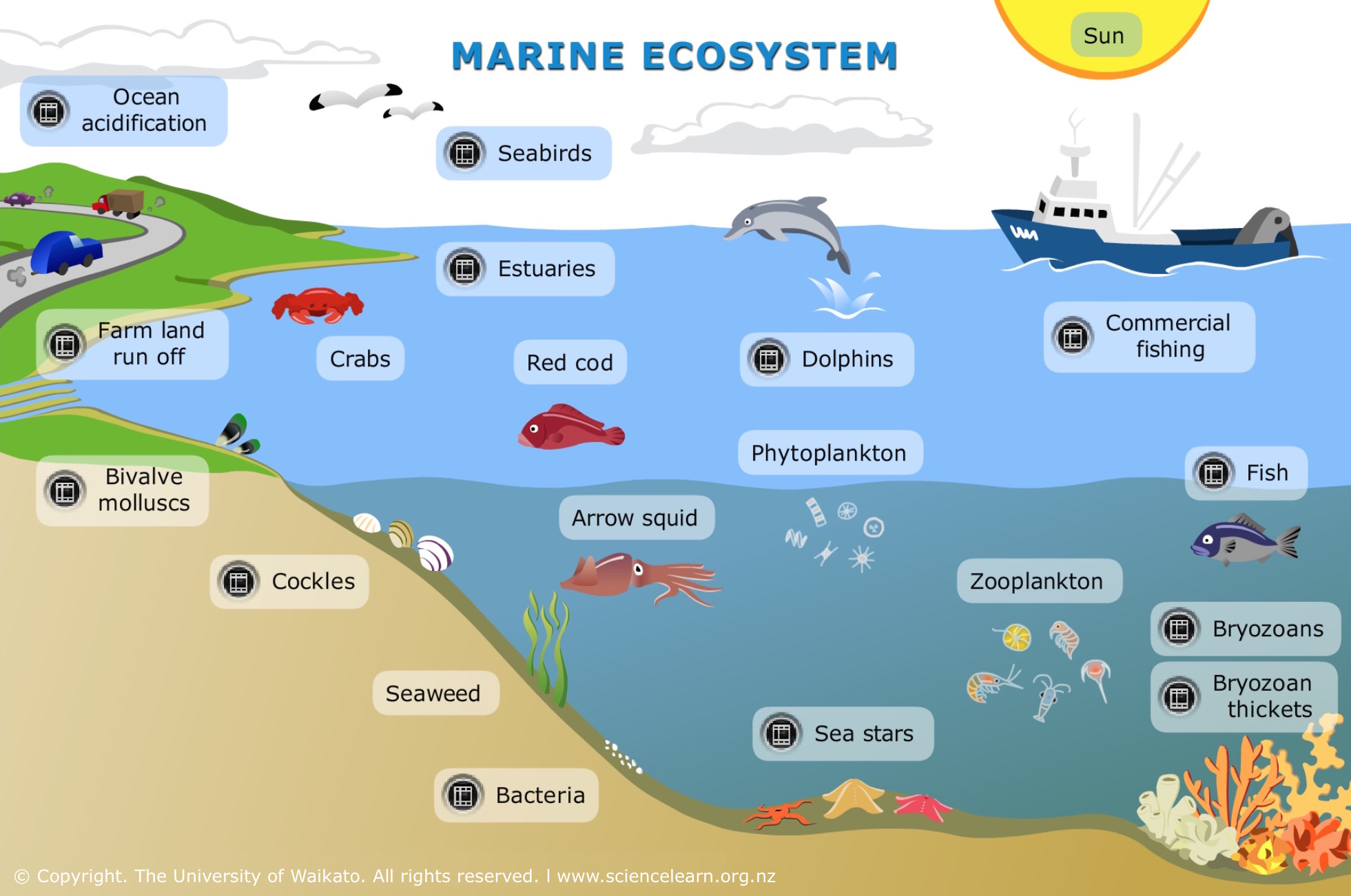
Types of Marine Ecosystems
Marine ecosystems are diverse and can be broadly categorized into several types, each with unique characteristics and species. These ecosystems range from shallow coastal areas to the deepest parts of the ocean, providing a variety of habitats for marine life.
- Estuaries: Where rivers meet the sea, mixing freshwater with saltwater, creating nutrient-rich environments that support a wide array of life and are crucial for the breeding and development of many marine species.
- Salt Marshes and Mangrove Forests: Coastal ecosystems that are key to coastal protection, supporting diverse communities of plants and animals, with mangroves characterized by their salt-tolerant trees and salt marshes by grassy wetlands.
- Coral Reefs: Known as the "rainforests of the sea," these biodiverse ecosystems are built by coral polyps and support a vast number of species, offering protection and resources for marine life.
- Open Ocean: The largest marine ecosystem, characterized by its depth and distance from the shore, home to many species of fish, mammals, and plankton, and varying greatly with depth.
- Deep Sea: Beyond the reach of sunlight, these ecosystems rely on chemosynthesis rather than photosynthesis, hosting unique life forms adapted to extreme conditions.
- Sandy Beaches, Kelp Forests, Polar Seas, and Rocky Marine Ecosystems: Each offers unique conditions and habitats, from the kelp forest"s towering algae providing shelter and food, to the icy waters of the polar seas supporting specialized life forms.
Understanding the types of marine ecosystems is crucial for conservation efforts, as each plays a vital role in the global environment, supporting biodiversity and providing essential services to human societies.
Key Species and Biodiversity
Marine ecosystems are renowned for their rich biodiversity, hosting an array of species from microscopic organisms to majestic megafauna. These ecosystems range from vibrant coral reefs to the mysterious depths of the deep sea, each with its unique inhabitants and ecological roles.
- Coral Reefs: Often referred to as the "rainforests of the sea," coral reefs boast a significant portion of oceanic biodiversity. They provide habitat for a myriad of species, including various fish, crustaceans, mollusks, and more, forming complex and interconnected communities.
- Open Ocean: The open ocean is home to a wide range of species, including the iconic marine mammals like whales and dolphins, as well as sharks, tunas, and vast schools of smaller fish. These species often traverse great distances, playing key roles in the ocean"s food web and nutrient cycles.
- Deep Sea: The deep sea is a realm of extreme conditions and remarkable adaptations. Life here includes specially adapted fish, crustaceans, cephalopods, and deep-sea corals that thrive in complete darkness, under immense pressure, and in cold temperatures.
- Mangroves and Estuaries: Serving as nurseries for many marine species, these areas are crucial for the lifecycle of numerous fish and crustaceans. Mangroves, in particular, are known for their unique tree species adapted to salty conditions, providing shelter and breeding grounds for diverse marine life.
Maintaining the diversity and health of these key species is vital for the resilience and functionality of marine ecosystems. They contribute to the overall health of the ocean, affecting everything from nutrient cycling to climate regulation and supporting fisheries and tourism industries.
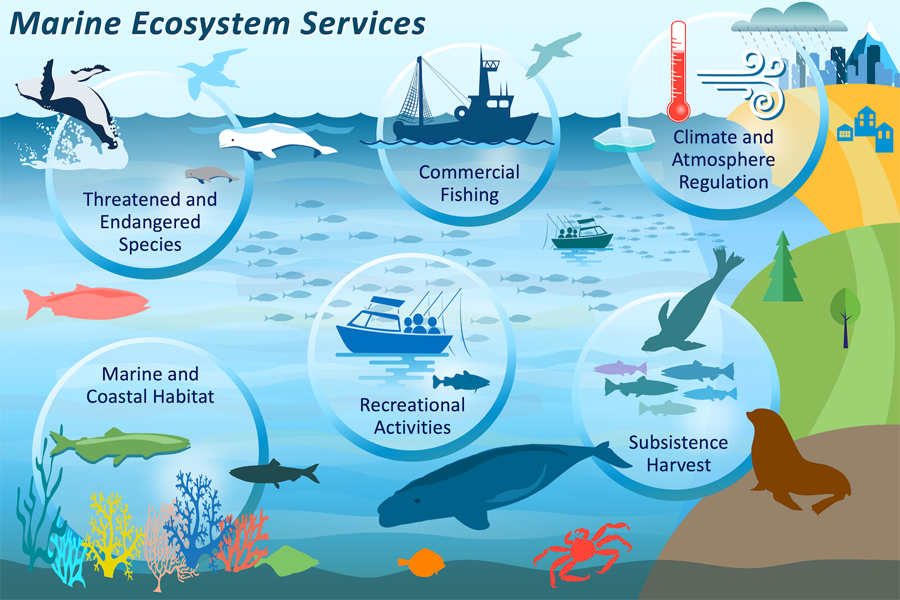
Importance of Coral Reefs
Coral reefs, often described as the "rainforests of the sea," are some of the most biologically diverse and economically valuable ecosystems on Earth. They provide essential services to marine life and humans alike, making their conservation a critical endeavor.
- Biodiversity Hotspots: Coral reefs support an extraordinary diversity of life, including thousands of species of fish, corals, and other marine organisms. This biodiversity is crucial for the health and resilience of marine environments.
- Economic Value: Reefs contribute significantly to local economies through tourism, fishing, and medicine. They are a source of food for millions of people worldwide and a hotspot for recreational diving and snorkeling, driving substantial revenue in coastal regions.
- Coastal Protection: Coral reefs act as natural barriers, protecting coastlines from the effects of storms and erosions. By absorbing wave energy, reefs prevent loss of life, property damage, and erosion of shorelines, saving billions of dollars in coastal defense costs.
- Scientific Research: The unique biodiversity of coral reefs offers invaluable opportunities for scientific research, leading to discoveries in medicine, including compounds for pharmaceuticals, and insights into climate change and marine science.
- Carbon Sequestration: Coral reefs play a role in the global carbon cycle by sequestering carbon dioxide, contributing to the regulation of global climate and mitigating the effects of climate change.
The preservation of coral reefs is not just about safeguarding marine biodiversity but also about sustaining the livelihoods of communities, protecting coastal regions, and preserving natural heritage for future generations.
Open Ocean and Deep-Sea Ecosystems
The open ocean and deep-sea ecosystems cover the majority of the Earth"s surface, presenting a vast, dynamic environment that ranges from the sunlit upper layers to the dark, pressure-intense depths. These ecosystems are critical for the health of the planet, supporting an incredible diversity of life and influencing global climate patterns.
- Epipelagic Zone: This sunlit upper layer of the ocean is teeming with life, from microscopic algae to large marine mammals like whales and dolphins. Algae in this zone are vital for oxygen production, contributing significantly to the Earth"s atmosphere.
- Mesopelagic Zone: Known as the twilight zone, this region extends from the edge of the epipelagic down to where sunlight fades. It hosts a variety of species, many of which migrate vertically to feed in the more productive surface waters at night.
- Bathypelagic and Abyssopelagic Zones: These zones are characterized by complete darkness, immense pressure, and cold temperatures. Life here has adapted to these extreme conditions, with many organisms relying on bioluminescence for communication and predation.
- Hadalpelagic Zone: The deepest parts of the ocean, such as trenches, fall within this zone. Despite the extreme conditions, life persists, adapted to the intense pressure and absence of light.
- Benthic Ecosystems: Including coral reefs, seagrass beds, and hydrothermal vents, these diverse habitats on the ocean floor support a wide range of species, from invertebrates to large fish, playing a crucial role in the ocean"s nutrient cycles.
The open ocean and deep-sea ecosystems are largely unexplored, holding mysteries that scientists continue to uncover. Their health is integral to the planet"s climate regulation, carbon cycle, and biodiversity.
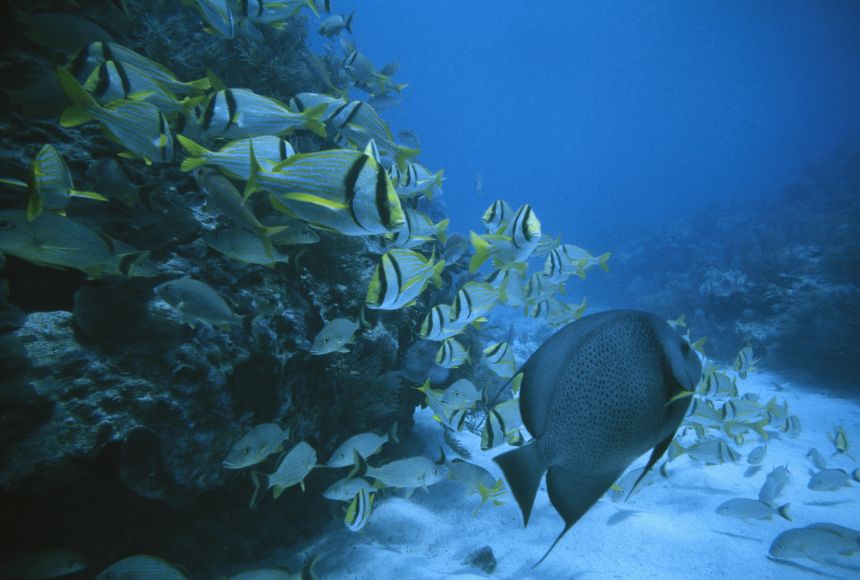
Human Impacts and Conservation Efforts
The ocean"s vast ecosystems face significant challenges due to human activities. The impacts are widespread, affecting the delicate balance of marine life and habitats. Recognizing these impacts is the first step towards mitigating them and fostering conservation efforts to safeguard our oceans for future generations.
- Pollution: Oceans are the final repository for a significant portion of the world"s pollution, including plastics, chemicals, and untreated waste, which harm marine life and ecosystems.
- Overfishing: Unsustainable fishing practices deplete fish stocks, disrupt food chains, and lead to the collapse of some marine species, affecting biodiversity and the livelihoods of communities reliant on fishing.
- Climate Change: Rising ocean temperatures and acidification, a result of increased carbon dioxide levels, threaten coral reefs, alter species distribution, and impact the health of marine ecosystems.
- Habitat Destruction: Coastal development, bottom trawling, and other activities physically alter or destroy key habitats like mangroves, seagrass beds, and coral reefs, leading to loss of biodiversity.
- Invasive Species: Human activities introduce non-native species to new environments, where they can become invasive, outcompete local species, and disrupt ecosystems.
Conservation efforts are underway globally to address these challenges:
- Marine Protected Areas (MPAs): Establishing MPAs helps conserve marine biodiversity, protect endangered species, and restore habitats by restricting human activities in these zones.
- Sustainable Fishing Practices: Implementing sustainable fishing regulations and practices ensures the long-term health of fish stocks and marine ecosystems.
- Plastic Reduction Initiatives: Efforts to reduce plastic use and improve waste management on land can significantly decrease the amount of plastic entering our oceans.
- Climate Action: Reducing greenhouse gas emissions through global agreements and initiatives helps mitigate the effects of climate change on marine ecosystems.
- Research and Monitoring: Continued research and monitoring of marine environments provide critical data for informed conservation decisions and policy-making.
Through collective action, awareness, and policy changes, we can mitigate human impacts and preserve the ocean"s health and biodiversity for future generations.
What are some ocean ecosystems? | Marine Ecosystems
Dive into the mesmerizing world of ocean ecosystems and witness the incredible diversity of marine life. Explore the vibrant coral reefs, vibrant seafloor, and the fascinating interaction between species in this captivating video.
Ocean Habitats and Ecosystems
Discover the awe-inspiring beauty of ocean habitats as you delve into the depths of the sea. From the enchanting kelp forests to the mysterious deep-sea trenches, this video will take you on a virtual journey through these remarkable underwater landscapes.
Emerging Threats and Future Challenges
As guardians of the planet"s largest ecosystem, it is crucial to understand the emerging threats and challenges that oceans face in the contemporary era and beyond. These threats not only jeopardize marine biodiversity but also have profound implications for human societies reliant on ocean resources.
- Climate Change: The accelerating pace of climate change poses severe threats to oceanic conditions, leading to rising sea temperatures, ocean acidification, and altered oceanic currents, which in turn affect marine life and their habitats.
- Plastic Pollution: The surge in plastic waste has led to pervasive pollution across all marine environments, from coastal waters to the deepest ocean trenches, impacting marine species through ingestion and entanglement.
- Overexploitation of Resources: The growing demand for marine resources has led to overfishing and exploitation of marine habitats, threatening the sustainability of fish stocks and the health of ecosystems like coral reefs and mangroves.
- Deep-Sea Mining: Emerging interest in deep-sea mining for minerals and resources poses new threats to the largely unexplored deep-sea ecosystems, potentially disrupting unique habitats and species.
- Chemical Pollution: Runoff containing chemicals from agriculture, pharmaceuticals, and industrial processes is increasingly contaminating marine ecosystems, leading to toxic effects on marine life and food chains.
- Acidification and Hypoxia: Increased carbon dioxide levels are causing ocean acidification, while nutrient runoff is leading to hypoxic (low oxygen) zones, both of which severely affect marine organisms and ecosystems.
- Emerging Pathogens: Climate change and human activities are facilitating the emergence and spread of marine pathogens, leading to disease outbreaks among marine species, with potential spillover effects to humans.
To address these challenges, a multi-faceted approach involving global cooperation, innovative conservation strategies, stringent regulations, and community engagement is essential. Emphasizing sustainable practices, reducing carbon footprints, enhancing marine protected areas, and investing in marine science research are critical steps towards safeguarding our oceans for future generations.

Role of Oceans in Climate Regulation and Carbon Cycle
Oceans play a pivotal role in Earth"s climate system and are integral to the global carbon cycle. Covering most of the planet"s surface, oceans are crucial for regulating climate by absorbing a significant portion of human-generated carbon dioxide emissions and a majority of the excess heat, contributing to the mitigation of climate change impacts.
- Heat Distribution: Oceans redistribute heat across the globe through currents, influencing weather patterns and climate. This helps to moderate temperatures, making the Earth"s climate more stable.
- Carbon Absorption: Oceans act as a major carbon sink, absorbing about a quarter of CO2 emissions caused by human activities. This absorption helps to reduce the greenhouse effect and global warming.
- Biological Carbon Sequestration: Through the biological carbon pump, phytoplankton convert CO2 into organic matter, part of which sinks to the deep ocean, sequestering carbon for centuries to millennia.
- Oxygen Production: Phytoplankton in the ocean"s surface waters contribute significantly to the Earth"s oxygen supply, supporting life both in the ocean and on land.
- Impact on Biodiversity: The ocean"s vast biodiversity plays a role in the carbon cycle, with marine organisms both contributing to and depending on the cycle"s processes.
Despite their significant role in climate regulation, oceans are facing threats from climate change, including warming, acidification, and reduced capacity to absorb CO2, posing challenges for marine life and human societies reliant on ocean resources.
READ MORE:
Economic and Cultural Significance of Ocean Ecosystems
Ocean ecosystems play a crucial role in supporting a wide range of economic activities that benefit societies worldwide. They are also deeply embedded in the cultural heritage of many coastal communities, shaping identities, traditions, and ways of life.
Economic Contributions
- Seafood Industry: The oceans are a vital source of food, providing a significant portion of the world"s protein intake. Fisheries and aquaculture are key industries that support millions of jobs globally.
- Maritime Transport: Oceans serve as major highways for international trade, with a large percentage of the world"s goods transported by sea. This includes everything from raw materials and energy products to manufactured goods.
- Tourism and Recreation: Coastal and marine environments attract tourists for beach holidays, recreational fishing, diving, and cruising, contributing significantly to local economies.
- Energy Sector: The ocean is a source of renewable energy, including wind, wave, and tidal power, as well as non-renewable resources like oil and natural gas.
- Pharmaceuticals and Biotechnology: Marine organisms are a source of novel compounds for medicines, nutritional supplements, and other biotechnological applications.
Cultural Importance
- Maritime Heritage: Many communities have a long history of interaction with the sea, reflected in their folklore, art, and traditions. This heritage is often celebrated through festivals, music, and storytelling.
- Spiritual and Symbolic Meanings: For many cultures, the ocean is considered sacred and is central to their spiritual beliefs and practices.
- Recreational and Inspirational Value: The beauty and majesty of the ocean inspire art, literature, and personal well-being, playing a significant role in human creativity and leisure activities.
Contributions to Global Economy
The concept of the "Blue Economy" underscores the importance of sustainable ocean resources for economic development. It includes sectors like sustainable seafood production, marine biotechnology, ocean-based renewable energy, and coastal tourism, highlighting the potential for oceans to contribute to poverty eradication, job creation, and food security.
Challenges and Opportunities
While ocean ecosystems offer immense economic and cultural benefits, they face threats from overfishing, pollution, climate change, and habitat destruction. Balancing the use of ocean resources with conservation efforts is crucial to ensuring the sustainability of these valuable ecosystems for future generations.
Exploring the vast and vibrant ocean ecosystems reveals their indispensable role in our planet"s health and human prosperity, inviting us to safeguard these precious resources for generations to come.

